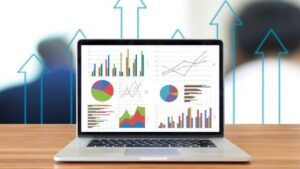The intersection of statistics and machine learning is evolving rapidly, shaping various industries and enhancing data-driven decision-making. Here are five key convergences to watch for by 2025:
1. Enhanced Predictive Modeling
- Integration of Statistical Techniques: Traditional statistical methods, such as regression analysis, will increasingly be integrated into machine learning models. This convergence enhances the robustness of predictive analytics.
- Real-World Applications: Businesses will leverage these models for better forecasting, leading to improved demand planning and inventory management.
2. Improved Interpretability
- Focus on Explainable AI: As machine learning models become more complex, there will be a significant push towards making these models interpretable.
- Statistical Frameworks: By employing statistical methods to explain model outputs, stakeholders can gain insights into the decision-making processes behind AI, fostering trust and transparency.
3. Data Quality and Preprocessing
- Statistical Techniques for Data Cleaning: The importance of data quality will drive the application of statistical methods for data preprocessing and cleaning.
- Robust Data Preparation: Statistical approaches will help identify outliers and biases in datasets, ensuring that machine learning models are trained on high-quality data.
4. Bayesian Approaches
- Growth of Bayesian Methods: The adoption of Bayesian statistics in machine learning will grow, allowing for more flexible and probabilistic modeling.
- Decision-Making Under Uncertainty: Bayesian methods will enable better handling of uncertainty, making them valuable for applications like risk assessment and medical diagnostics.
5. Interdisciplinary Collaboration
- Merging Expertise: As the fields of statistics and machine learning continue to converge, there will be a growing need for professionals who are skilled in both areas.
- Collaborative Innovations: This interdisciplinary collaboration will lead to innovative solutions and tools that leverage the strengths of both disciplines, pushing the boundaries of data analysis.
Conclusion
By 2025, the convergence of statistics and machine learning will create new opportunities for enhanced predictive modeling, improved interpretability, and more robust data quality practices. These developments will shape the future of data analysis, driving advancements across various fields. For stude
nts and professionals looking to deepen their understanding of these topics, resources from Statistics Homework Tutors can provide valuable insights and guidance.


